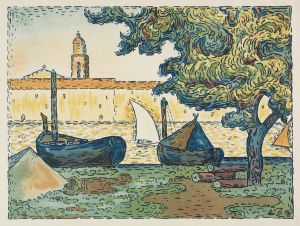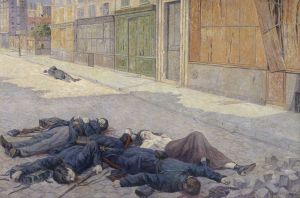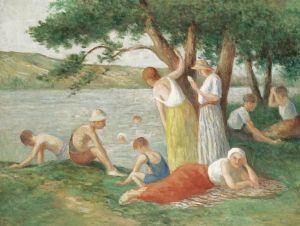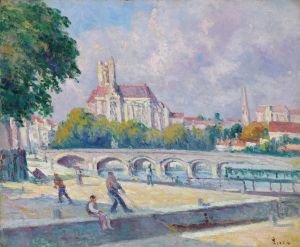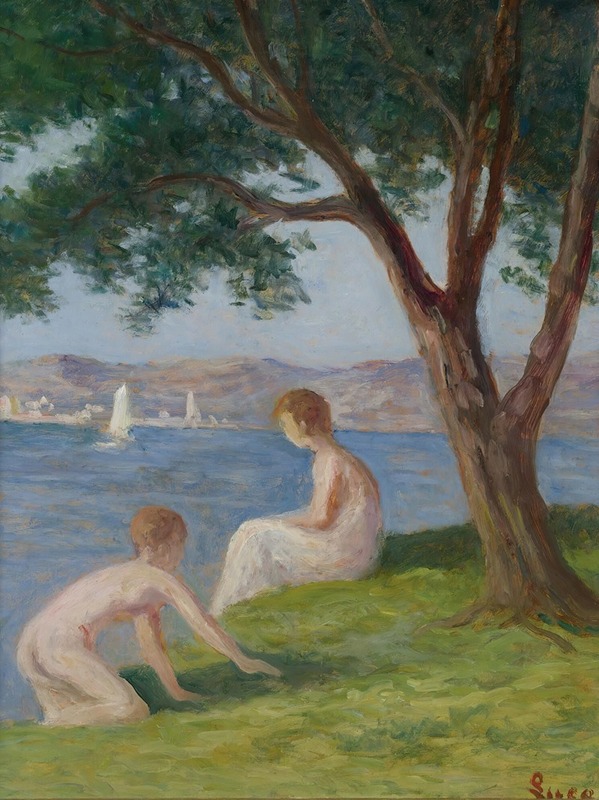
Baigneurs À St. Tropez
A hand-painted replica of Maximilien Luce’s masterpiece Baigneurs À St. Tropez, meticulously crafted by professional artists to capture the true essence of the original. Each piece is created with museum-quality canvas and rare mineral pigments, carefully painted by experienced artists with delicate brushstrokes and rich, layered colors to perfectly recreate the texture of the original artwork. Unlike machine-printed reproductions, this hand-painted version brings the painting to life, infused with the artist’s emotions and skill in every stroke. Whether for personal collection or home decoration, it instantly elevates the artistic atmosphere of any space.
Maximilien Luce was a French Neo-Impressionist artist known for his paintings, illustrations, and engravings. Born in Paris on March 13, 1858, Luce was initially trained as an engraver before turning to painting. He became associated with the Neo-Impressionist movement, which was characterized by the use of pointillism—a technique involving the application of small, distinct dots of color to form an image. Luce was influenced by the works of Georges Seurat and Paul Signac, who were pioneers of this style.
"Baigneurs À St. Tropez" is one of Luce's notable works, showcasing his mastery of the Neo-Impressionist technique. The painting depicts bathers at the beach in Saint-Tropez, a picturesque town on the French Riviera. This location was a popular destination for artists in the late 19th and early 20th centuries due to its vibrant light and stunning coastal scenery. The painting captures the leisurely atmosphere of the seaside, with figures enjoying the sun and water.
Luce's use of color and light in "Baigneurs À St. Tropez" exemplifies the Neo-Impressionist approach. The artist employed a palette of bright and harmonious colors, applying them in small, distinct strokes to create a shimmering effect that conveys the play of sunlight on the water and sand. This technique not only enhances the vibrancy of the scene but also reflects the scientific theories of color and optics that were central to the Neo-Impressionist movement.
Throughout his career, Luce was deeply committed to social and political causes, which often influenced his choice of subjects. While "Baigneurs À St. Tropez" is primarily a depiction of leisure, it also reflects Luce's interest in everyday life and the experiences of ordinary people. His ability to capture the essence of a moment and the beauty of the natural world is evident in this work.
Luce's contributions to the art world extend beyond his paintings. He was an active member of the Société des Artistes Indépendants, an organization that promoted independent artists and provided an alternative to the traditional Salon exhibitions in Paris. Through this association, Luce was able to exhibit his works alongside other avant-garde artists, gaining recognition and influencing the development of modern art.
"Baigneurs À St. Tropez" remains an important example of Luce's artistic legacy, illustrating his skillful use of color and light to capture the essence of a scene. The painting is a testament to the enduring appeal of the Neo-Impressionist style and its impact on the trajectory of modern art. Luce's work continues to be celebrated for its technical innovation and its ability to convey the beauty and complexity of the world around us.
Maximilien Luce passed away on February 6, 1941, leaving behind a rich body of work that continues to be studied and appreciated by art enthusiasts and scholars alike. His paintings, including "Baigneurs À St. Tropez," are held in various public and private collections, ensuring that his contributions to the art world are remembered and cherished.





